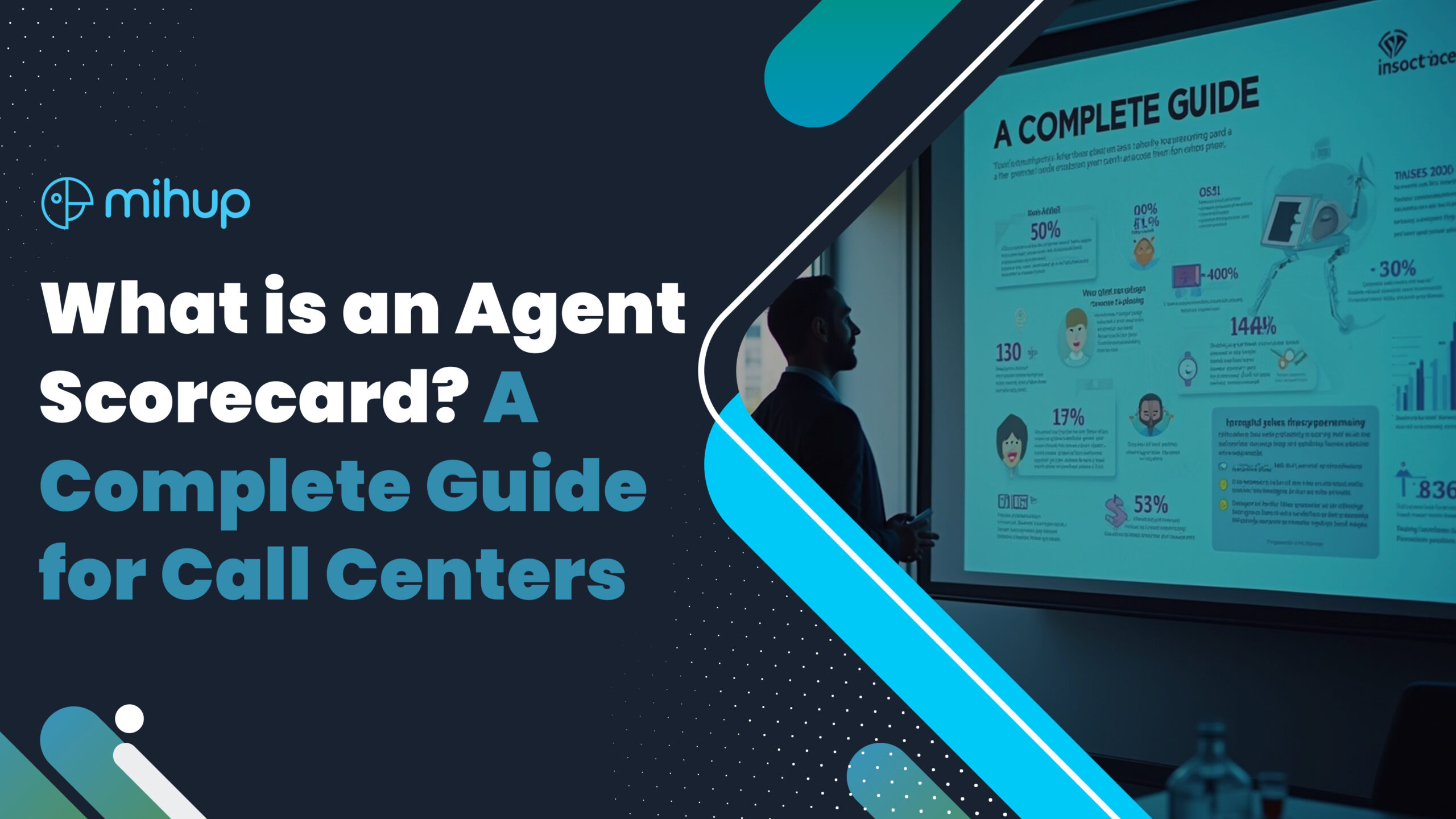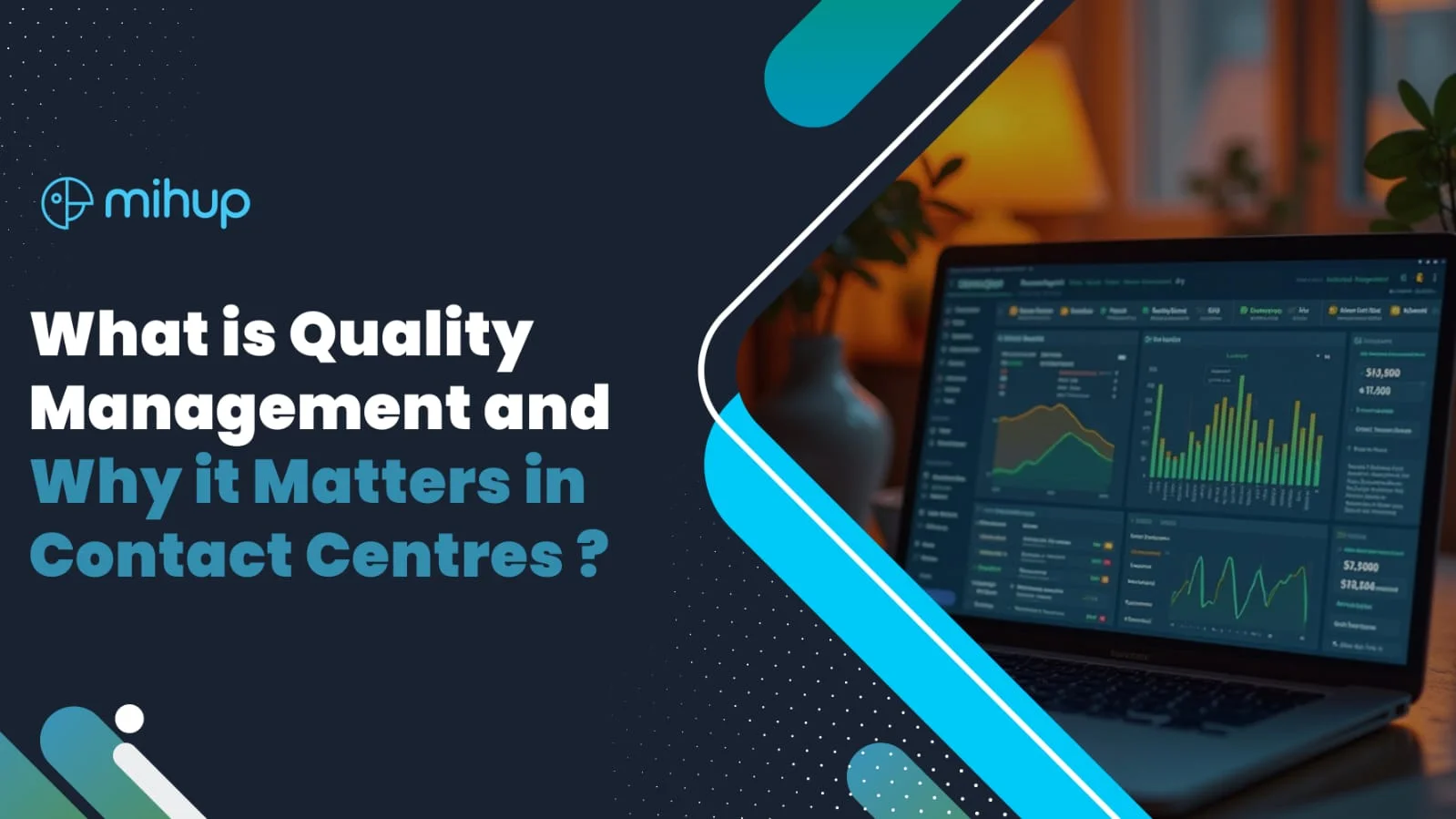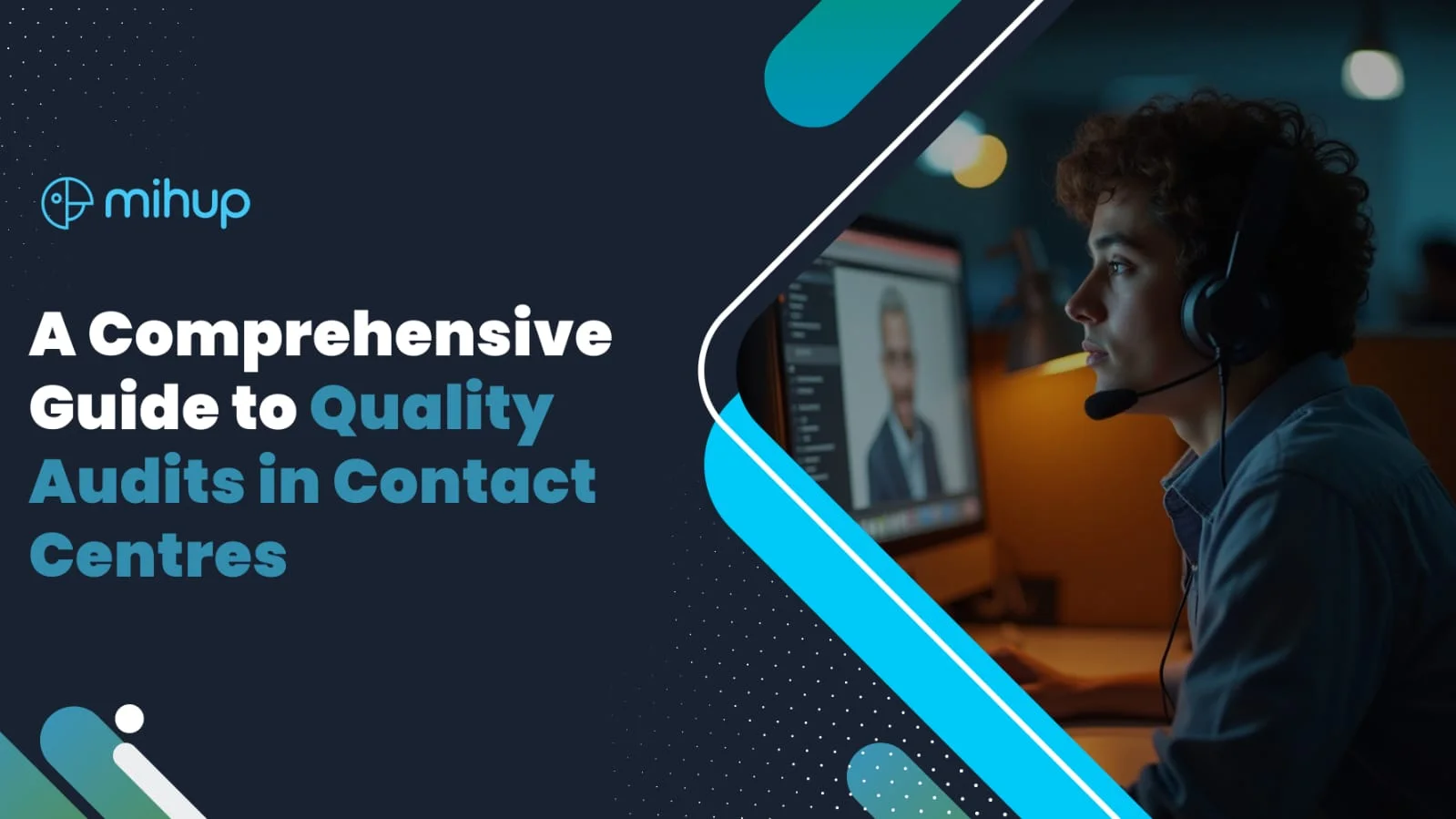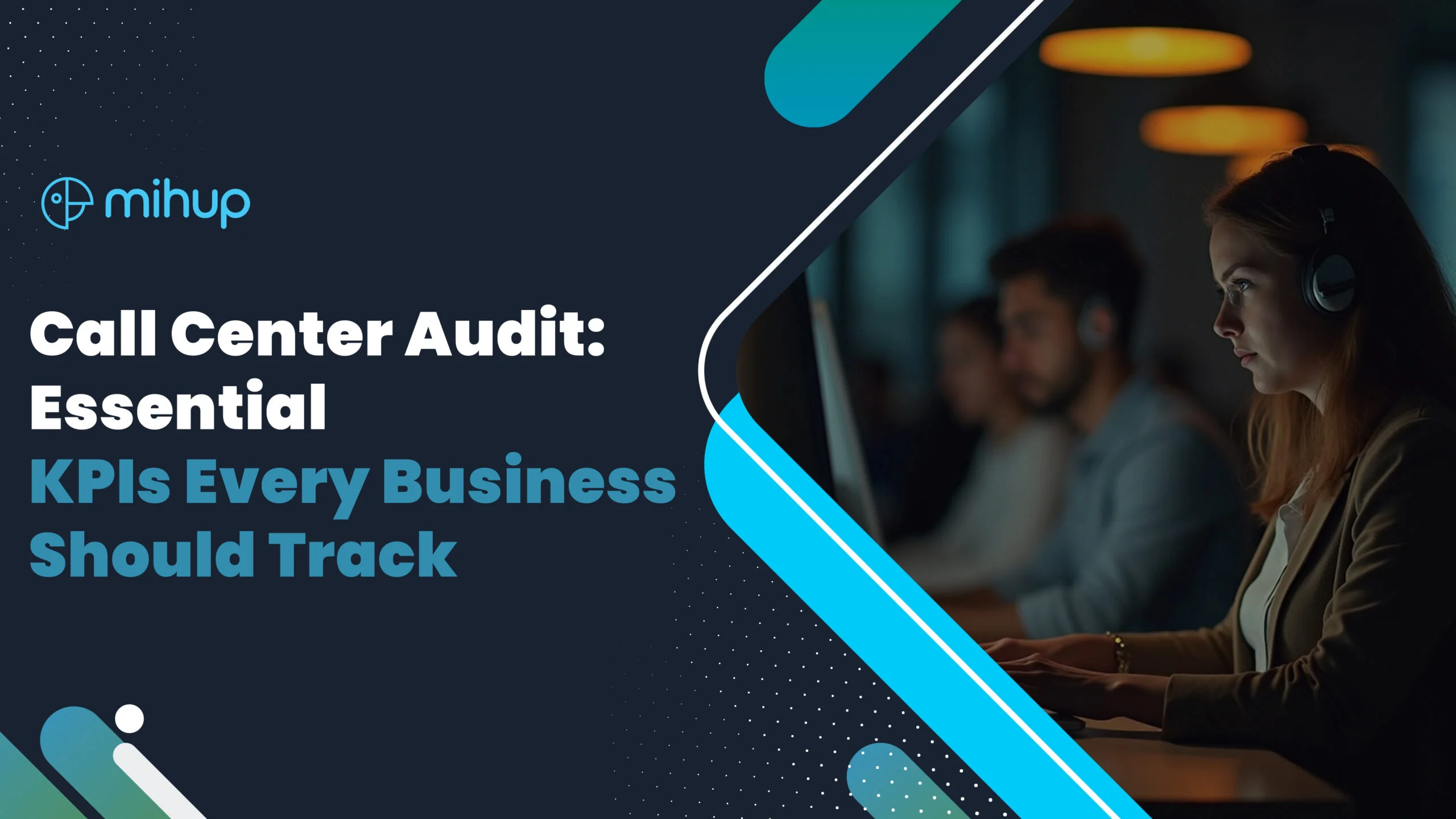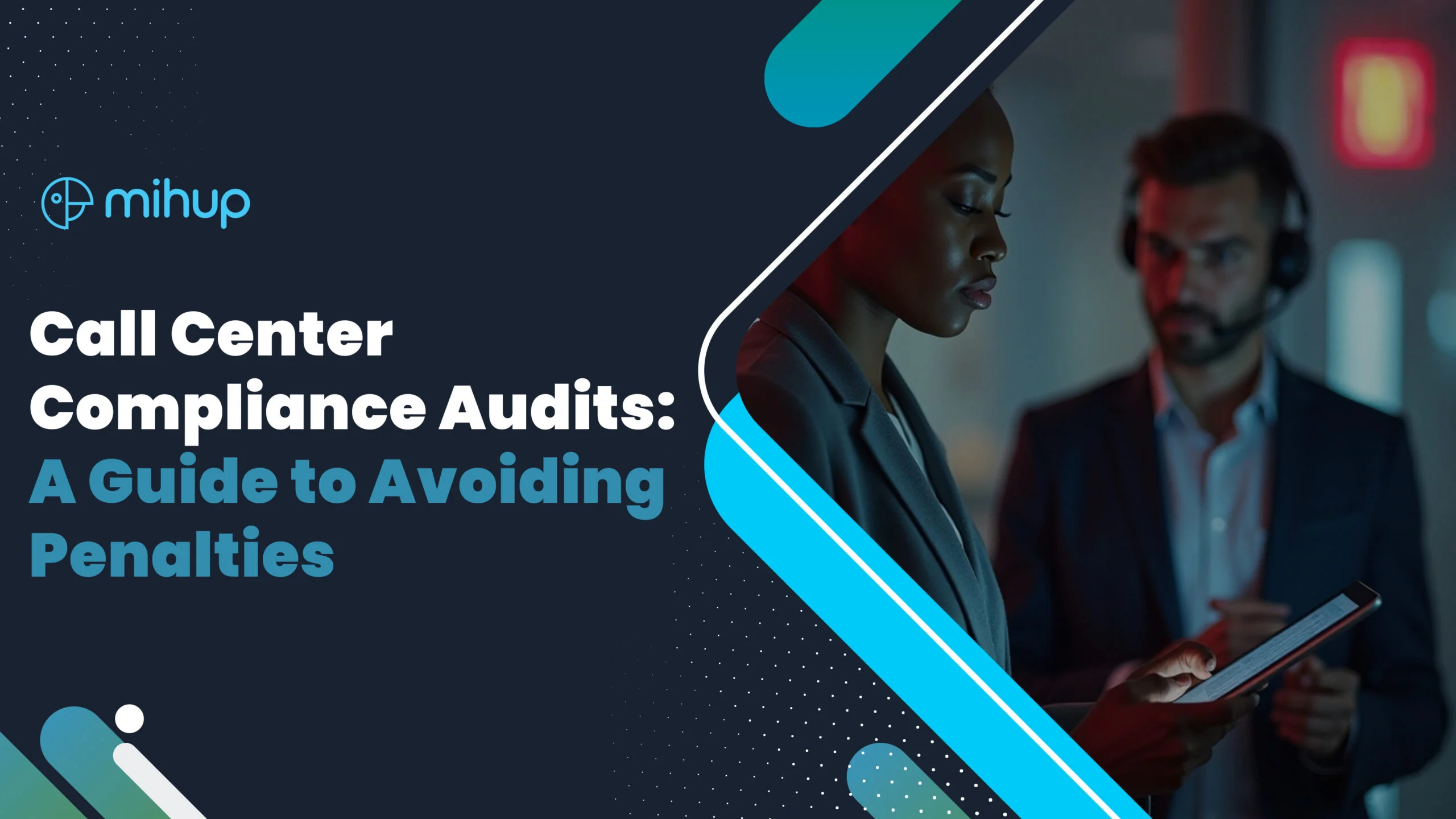An agent scorecard is a systematic framework designed to evaluate and enhance agent performance during the customer engagement process. Think of it as a report card that assesses your overall potential; an agent scorecard reflects the balance of data and human perception to demonstrate how well an agent is performing.
In the experience economy we live in today, simply monitoring call times and/or a number of calls is not enough. A well-thought-out agent scorecard will reveal how the agent’s actions, together with your Company’s goals, will have a long-term impact on overall customer satisfaction, retention, and revenue generation.
In this article, we illustrate the mechanics involved in an agent scorecard, the importance of it, and finally, we outline the steps to implement agent scorecards to support both business goals and agent success.
Key Components of an Effective Call Center Agent Scorecard
A quality scorecard blends quantitative and qualitative measurements to carve a clear pathway for measurable performance. The following are the key components:
1. Quantitative Key Performance Indicators (KPIs)
- Average Handle Time (AHT): Measures the time spent on customer interactions from the time of contact with a customer, including talk time, hold time, and after-call work
- First Call Resolution (FCR): Measures the percentage of customer issues resolved in the first contact.
- Customer Satisfaction Score (CSAT): Reflects customer experience by gathering customer feedback on their interaction experience
- Net Promoter Score (NPS): Indicates customer loyalty and likelihood to recommend your service
- Customer Effort Score (CES): Evaluates how easy it was for customers to get their issues resolved
2. Qualitative Performance Metrics
- Call Etiquette: Professional greeting, active listening, use of appropriate language
- Communication Skills: Clarity, tone, pace of voice, and ability to explain complex information
- Process Adherence: Following scripts, protocols, and compliance
- Problem-Solving: Ability to identify problems and produce effective solutions
3. Behavioral and Emotional Intelligence Metrics
- Empathy and understanding of customer needs
- Patience during difficult conversations
- Ability to adapt to different customers and their personalities
- Stress management during peak call volumes
4. Balanced Scoring Approach
A successful scorecard must strike a balance between efficiency and quality. Although metrics like AHT, by their nature, concentrate on productivity, they must not diminish the focus on customer experience measures. The balance will look different for different organizations and even for the same organization, depending upon the business intent; sales teams might focus on conversion, technical support may be focusing on the resolution accuracy, and customer service may focus on the satisfaction score.
Each measure needs to be considered with appropriate weighting relative to its effect on the organization’s effectiveness and the customer experience.
Benefits of Using Agent Scorecards in Call Centers
Agent scorecards are critical tools for establishing excellence in call center operations. Scorecards are structured evaluation frameworks that have measurable impacts in multiple areas of call center performance.
1. Improved Agent Accountability
Agent scorecards provide clear expectations and criteria to measure agent performance. When agents know exactly what they are being evaluated on, they take better ownership of their work. Their use of the scorecard also creates transparency in the evaluation process that levels the playing field, allowing agents to measure their progress and impact on customer satisfaction.
2. Data-Rich Training Development
Using regular evaluations is an effective way to reinforce and establish what agents will need support or development in. It allows managers to formulate specific training programs for individual agents, improve the performance of entire teams, and target training resources better based on actual performance data.
3. Customer Experience Optimization
Scorecards assist in customer experience optimization when the right performance measures are monitored so that agents’ behaviors are aligned with customer expectations. As a result, service delivery is more consistent, satisfaction is higher, loyalty is greater, and churn rates decline, leading to an overall improvement in performance across the metrics valued by an organization and within a customer’s experience.
4. Strategic Resource Management
Scorecard data helps managers make better operational decisions. Managers can use the data to make decisions about how to optimize staffing assignments, find out high performers for opportunities of coaching or mentorship, determine areas to include as a focus for future coaching sessions, and vis-a-vis resources for specialist agents based on performance metrics.
5. Quality Assurance Improvement
Having uniformly applied standards for reviews of performance and service delivery means there are consistent standards directing service quality elements and ensuring their monitoring. This consistency reduces variability in experiences for customers and ensures standards and excellence in service delivery are maintained. Ultimately, performance reviews that leverage scorecards and other performance measures transform subjectivity into objective and measurable insights, laying the groundwork for continual improvement.
Creating an Effective Call Center Agent Scorecard: A Step-by-Step Guide
Building a robust call center agent scorecard requires careful planning and strategic implementation. Let’s break down the essential steps to create a scorecard that drives performance and aligns with your business objectives.
Step 1: Define Clear Objectives
Start with clear and specific objectives: customer satisfaction targets, SLAs, revenue milestones, or quality benchmarks. Everything else should align with these.
Step 2: Select Relevant KPIs
Choose metrics that directly impact your defined objectives:
Quantitative Metrics:
- Average Handle Time (AHT)
- First Call Resolution (FCR)
- Customer Satisfaction Score (CSAT)
Qualitative Criteria:
- Communication clarity
- Problem-solving abilities
- Product knowledge
- Empathy and emotional intelligence
Step 3: Develop a Weighted Scoring System
Create a balanced scoring formula that prioritizes crucial metrics:
Example Weighted Formula:
Overall Performance Score = (CSAT × 0.4) + (FCR × 0.3) + (AHT × 0.2) + (Quality Score × 0.1)
Step 4: Establish Data Collection Mechanisms
Implement reliable systems to gather performance data: use tools like speech analytics, CRM systems, call recordings, and customer feedback surveys to feed your scorecard.
Step 5: Pilot and Refine
Launch a test phase to validate your scorecard:
- Select a small group of agents
- Monitor results for 30-60 days
- Gather feedback from agents and supervisors
- Adjust weights and metrics based on findings
Scoring Parameters Example:
CSAT Ratings:
90%+ = 5 points
80-89% = 3 points
<80% = 1 point
FCR Metrics:
First interaction resolution = 5 points
Resolution after follow-up = 3 points
Multiple interactions needed = 1 point
Remember to customize these parameters based on your contact center’s unique requirements and industry standards. Regular monitoring and adjustment of your scoring system ensures its continued effectiveness in driving agent performance and meeting business objectives.
Best Practices for Designing and Implementing Agent Scorecards
A well-designed agent scorecard must factor in several best practices to achieve maximum value. Here are some important practices for implementation.
1. Metrics that are clear and manageable
Avoid the temptation to track every possible metric on an agent scorecard. Choose 5-7 important metrics that directly relate to your contact center’s operational objectives. By limiting these metrics, you can avoid overloading agents with information and create a meaningful performance evaluation.
2. Design a Role-specific scorecard
Sales and technical support agents should not be evaluated on the same criteria. It is important to have role-specific scorecards that clearly illustrate the differences in job responsibilities of each team.
Sales Groups: Customer conversion, upselling, and sales call efficiency.
Support Teams: First-call resolution, providing correct technical information, and customer satisfaction.
Service Teams: Response time to a customer, resolution time, and customer feedback.
3. Keep your system flexible
Business imperatives will change – so should your scorecard. It is a good idea to schedule quarterly reviews of the relevance of your metric and adjustment of weighting according to changing business objectives and customer requirements.
4. Build a Coaching Framework
Leverage scorecard data to develop actionable development plans:
- Set bi-weekly coaching meetings
- Use actual call examples to show where improvements can be made
- Develop specific, measurable goals for skills improvement
- Use tracking or performance trends to monitor progress
- Provide recognition and rewards at milestones for improvements made
5. Balance Quantitative and Qualitative Feedback
Numbers only tell half the story. Include agent self-assessments as well as peer feedback and customer comments to create a full performance system recognizing both metrics and elements of human interaction with customers.
These performance-management recommendations included in your agent scorecard designs will allow management and agents alike to have a much more effective and streamlined process.
Provide Actionable Feedback and Coaching Using Scorecards
Agent scorecards are most effective when used alongside thoughtful feedback and coaching strategies. A balanced approach combines hard metrics with qualitative insights to create meaningful development opportunities.
Creating Comprehensive Feedback Sessions
Effective feedback integrates scorecard data with real call examples. When discussing CSAT scores, managers can reference specific customer interactions where agents demonstrated exceptional service or missed opportunities for improvement. This concrete connection helps agents understand how their actions directly impact their scorecard metrics.
Structured One-on-One Reviews
Regular coaching sessions should follow a clear format:
- Review current scorecard metrics
- Listen to call recordings together
- Identify specific strengths and areas for growth
- Set measurable goals for the next review period
Personalized Development Plans
Each agent’s improvement plan should reflect their unique scorecard results:
- Short-term goals: Target immediate performance gaps
- Long-term objectives: Focus on career development
- Skill-building activities: Tailored training modules
- Progress tracking: Regular check-ins and milestone celebrations
Peer Learning Programs
High-performing agents can share their expertise through:
- Side-by-side shadowing sessions
- Best practice sharing workshops
- Mentorship partnerships
- Team huddles featuring success stories
This collaborative approach transforms scorecards from mere evaluation tools into catalysts for continuous growth and development within the call center environment.
Moreover, incorporating peer learning programs allows high-performing agents to share their expertise, which can significantly enhance the overall performance of the team.
Enhancing Performance with Mihup.ai Conversational Intelligence Platform
A leading financial services provider, aiming to enhance operational efficiency and customer satisfaction, faced challenges such as high Average Handling Time (AHT), inconsistent agent performance, and costly escalations. To address these issues, the company partnered with Mihup.ai to implement their AI-powered Interaction Analytics.
How Mihup.ai Works
Mihup.ai’s advanced speech analytics engine automatically processes customer-agent conversations in real-time, capturing:
- Sentiment Analysis: Detecting customer mood shifts and agent empathy levels
- Voice Pattern Recognition: Measuring tone, pitch, and speaking pace
- Keyword Tracking: Identifying compliance phrases and problem-solving approaches
The Results
Mihup’s solution enabled 100% interaction analysis, providing precise insights into performance issues and facilitating scalable interventions. As a result, the company achieved a 16% reduction in AHT, improved customer satisfaction scores by 20%, and realized significant operational cost savings.
This transformation underscores the effectiveness of integrating AI-driven analytics into customer support operations to drive efficiency and enhance service quality.
For a more detailed overview, you can refer to the full case study here: AI-Powered Interaction Analytics Case Study
Conclusion
Agent scorecards are powerful tools for call center success, combining data-driven insights with human expertise. The combination of advanced technology like Mihup.ai with personalized coaching creates a flexible performance evaluation system that encourages ongoing improvement.
By using modern solutions and following the guidelines in this guide, you’ll create a strong evaluation framework that improves agent performance, boosts customer satisfaction, and drives measurable business results.
Take the first step today, book your free demo – your agents and customers will appreciate it.
